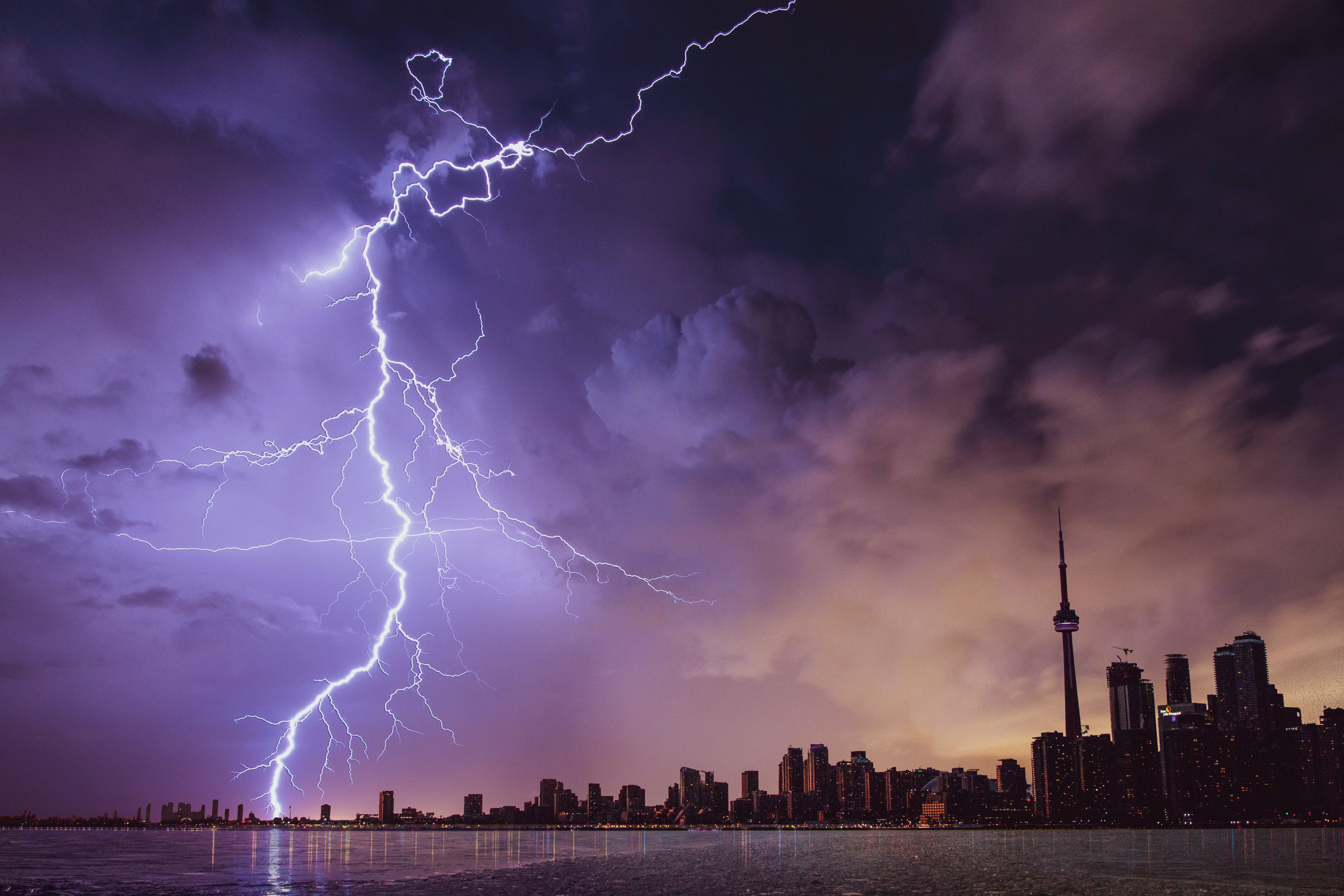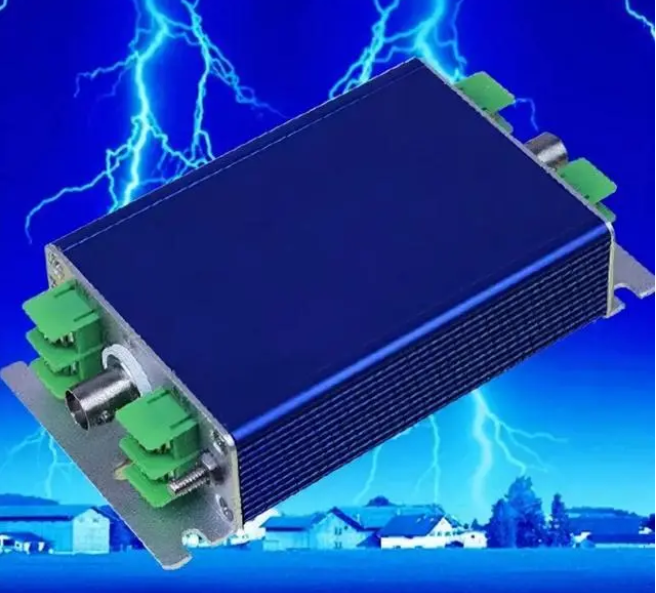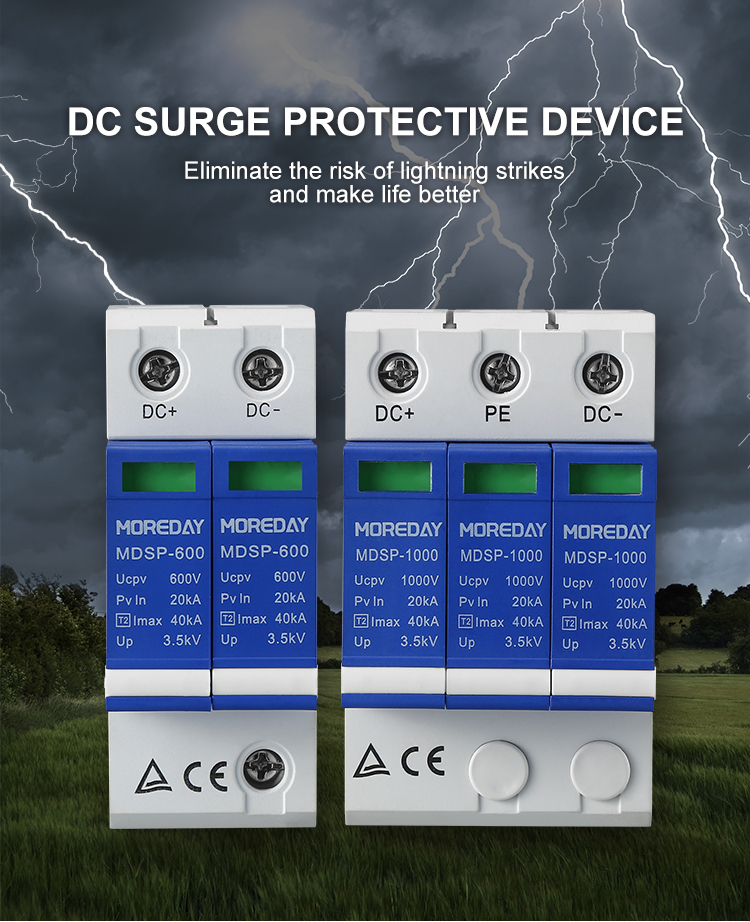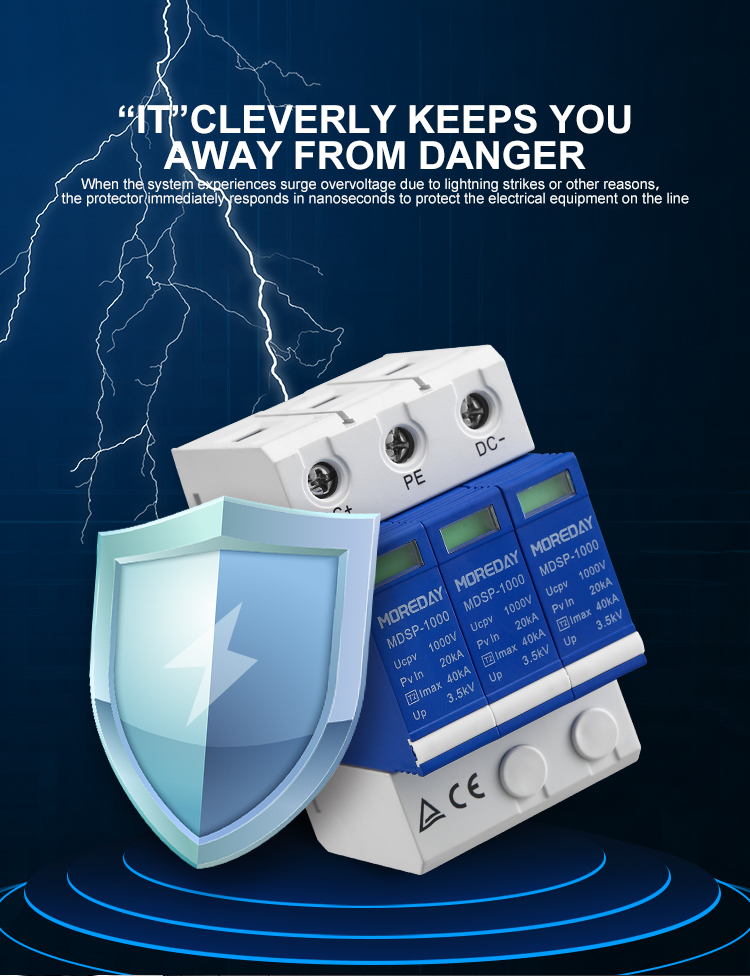What is a lightning protection surge module (surge protector)? It is estimated that most electrical technicians are familiar with it. A surge protector (SPD) actually suppresses surge voltages caused by lightning, electrical system operations, or static electricity. Lightning strike is a natural phenomenon that may cause serious harm. It will not only cause great harm to people, livestock, trees, etc., but also seriously affect buildings and electrical and electronic equipment. Therefore, it is very important to install lightning protection devices. As a lightning protection device, surge protector is widely used in life. The installation of surge protectors in electronic and electrical equipment and communication lines can not only effectively reduce the impact of lightning, but also enhance the safety of electronic equipment in buildings. So what is the specific usage principle of the lightning protection surge module (surge protector)?
[1] Overview of lightning protection surge module (surge protector):
In circuit protection solutions, lightning surge protection is a protection focus that electronic engineers are particularly concerned about. Surge is also called surge. As the name suggests, it is an instantaneous overvoltage that exceeds the normal working voltage. Surge protector, also called lightning protector, It is an electronic device that provides safety protection for various electronic equipment, instruments and communication lines. When a surge current or voltage is suddenly generated in an electrical circuit or communication line due to external interference, the surge protector can conduct the shunt in a very short period of time, so as to avoid the damage of the surge to other equipment in the circuit. A surge is a violent pulse that occurs in just a few millionths of a second.
The most primitive surge protector, the horn-shaped gap, appeared in the Zhu period of the 19th century. It was used for overhead transmission lines to prevent lightning strikes from damaging equipment insulation and causing power outages, so it was called "surge protector". In the 1920s, it appeared. Aluminum surge protectors, oxide film surge protectors and pill surge protectors appeared in the 130s, tubular surge protectors appeared in the 1950s, silicon carbide surge protectors appeared in the 1950s, and metal oxides appeared in the 1970s. Surge protectors, modern high-voltage surge protectors, are used not only to limit overvoltages caused by lightning in power systems, but also manually limit overvoltages caused by system operation.
[2] Lightning protection and surge modules (surge protectors) are classified according to their working principles:
The components in the surge protector (varistor MOV, silicon avalanche diode SAD, air duct, large discharge capacitor) are used to dissipate the inrush current (heat and melt), so that the inrush current introduced into the ground is safe. Within the range, no secondary counterattack will be formed. The life of the suppression element will be shortened due to repeated current shocks. Sine Tamer adopts 40 modules, thermal and electric fuse double insurance, heat sharing algorithm, etc., to ensure the service life of Sine Tamerf. Sine Tamer dissolves about 90% of overvoltage and overcurrent, and the remaining 10% is led into the ground.
The SPD is connected in parallel between the line (L/N) and the ground. Under normal working voltage, the MV is in a high resistance state, which is equivalent to an open circuit between the line and the ground, which does not affect the normal operation of the line. The fault display window is green. When the line is due to lightning Or when instantaneous pulse overvoltage occurs during switching operation, the lightning protection module is quickly turned on in nanoseconds, and the overvoltage is short-circuited to the earth. When the pulse overvoltage disappears, the lightning protection module automatically returns to the high resistance state without affecting the User power supply.
When the lightning protection module works in an overloaded working state for a long time, its performance deteriorates and heats up to a certain temperature. The thermal circuit breaker (K1) in the module will automatically disconnect the lightning protection module circuit to protect the power supply circuit from being affected and prevent fires. When the line induces excessive lightning current, the overcurrent circuit breaker (K2) is quickly disconnected to prevent the SPD from exploding. After K1 or K2 is actuated, the tripping device in the SPD will act to make the fault display window display red, reminding the user to replace the SPD module. At the same time, the tripping device will drive the remote signal alarm switch (SK) to act and output the fault alarm signal.
1) Switch type
Its working principle is that when there is no instantaneous overvoltage, it presents a high impedance, but once it responds to lightning instantaneous overvoltage, its impedance suddenly changes to a low value, allowing lightning current to pass. When used as such devices, the devices include: discharge gaps, gas discharge tubes, thyristors, etc.
2) Pressure limiting type
Its working principle is that when there is no instantaneous overvoltage, it is high resistance, but with the increase of surge current and voltage, its impedance will continue to decrease, and its current-voltage characteristic is strongly nonlinear. Devices used for such devices are: zinc oxide, varistor, suppressor diode, avalanche diode, etc.
3) Shunt type or shunt type
Shunt type: connected in parallel with the protected equipment, it presents low impedance to lightning pulses and high impedance to normal operating frequencies.
4) There are many devices used as such devices
Choke coil, high pass filter, low pass filter, 1/4 wavelength short circuit, etc.
[3] Lightning protection and surge modules (surge protectors) are classified by use:
1) Power protector: AC power protector, DC power protector, switching power protector, etc.,
2) Signal protector: low frequency signal protector, high frequency signal protector, antenna feeder protector, etc.
[4] Classification of lightning protection and surge modules (surge protectors):
Depending on the surge protector chosen and the expected environmental impact, the protection required to protect the power supply and equipment of the system is divided into three levels.
Class B surge protector: nominal discharge current, impulse voltage 1.2/50μs impulse voltage and maximum impulse current imp, the waveform of imp is 10/350μsUp maximum 4kv (EC61643-1; 1EC60664-1).
Class C surge protector: nominal discharge current In, impulse voltage 1.2/50μs impulse voltage and maximum impulse current limp test, the waveform of imp is 8/25ms.
Class D surge protector: carry out mixed wave combination (open circuit voltage 1.2/50μs impulse voltage,
Also electrical knowledge classroom
Deng Road current 8/25μs) test.
[5] Selection of lightning protection and surge module (surge protector):
Whether the surge protector is good or not is directly related to the safety of the equipment, so there are several points for reference when choosing a surge protector:
Clamp Voltage—This represents the voltage value that will cause the MOV to turn on to ground. The lower the clamping voltage, the better the protection performance. This U is nominally available in three protection levels - 330 volts, 400 volts and 500 volts. Typically, level voltages over 400 volts are too high.
Energy Absorption/Dissipation Capability - This nominal value indicates how much energy, in joules, the surge protector can absorb before it burns out. The higher the value, the better the protection performance. The protector you buy should be rated at least between 200 and 400 joules. For better protection, you should look for products with this rating above 600 joules.
Response Time—Surge protectors do not open immediately; they respond to surges with a slight delay, and longer response times indicate that the computer (or other device) will be exposed to the surge for longer durations. Buy a surge protector with a response time of less than a millisecond, and you should also buy a protector with an indicator light so you can tell if the protection element is working. After many surges, all MOVs will burn out, but the protector will still work as a power strip. Without the power light, there is no way to know if the protector is still working properly.
【6】Causes of surge:
Surges can be caused by: heavy equipment, short circuits, power switching or large engines, and products that contain surge blocking devices can effectively absorb large bursts of energy to protect connected equipment from damage.
[7] Differences and connections between voltage limiting and switching surge protectors:
Answer: The switch-type surge protector is a gap discharge type device, which has a large discharge capacity of lightning energy. The main function used on the line is to discharge the lightning energy; the voltage-limiting type surge protector is a zinc oxide varistor device. The lightning energy discharge ability is small, but its overvoltage suppression ability is good. The main function of using it on the line is to limit the overvoltage. Because of this, switch-type surge protectors such as Asafe series are generally used at the entrance of buildings to discharge lightning energy, and then, voltage-limiting surge protectors such as AM series are used in the subsequent circuit to limit the lightning energy caused by the previous stage. After discharge, high overvoltage is generated in the subsequent circuit. The two types of surge protectors need to be used together to ensure the safety of the equipment in the distribution line.
[8] The selection method of the miniature circuit breaker matched with the surge protector:
Asafe: Switch-type modules do not need to install miniature circuit breakers because their damage is open circuit; first-level modules, such as AMl-40, need to use D-type miniature circuit breakers with a breaking current capacity of 63A and 10KA; second-level modules , such as AM2-20, it is necessary to choose C and D type miniature circuit breakers with a breaking current capacity of 32A and 6.5KA. Due to the difference in the N value of its working curve, it is recommended to use D type; the third-level module, such as AM3-10, It is necessary to select C and D type miniature circuit breakers with a breaking current capacity of 16A and 4.5KA. Due to the difference in the N value of their working curves, it is recommended to use the D type.
Characteristics of lightning voltage/current: 1.2/50uS lightning voltage pulse waveform (IEC6106)
Post time: Nov-02-2022
















